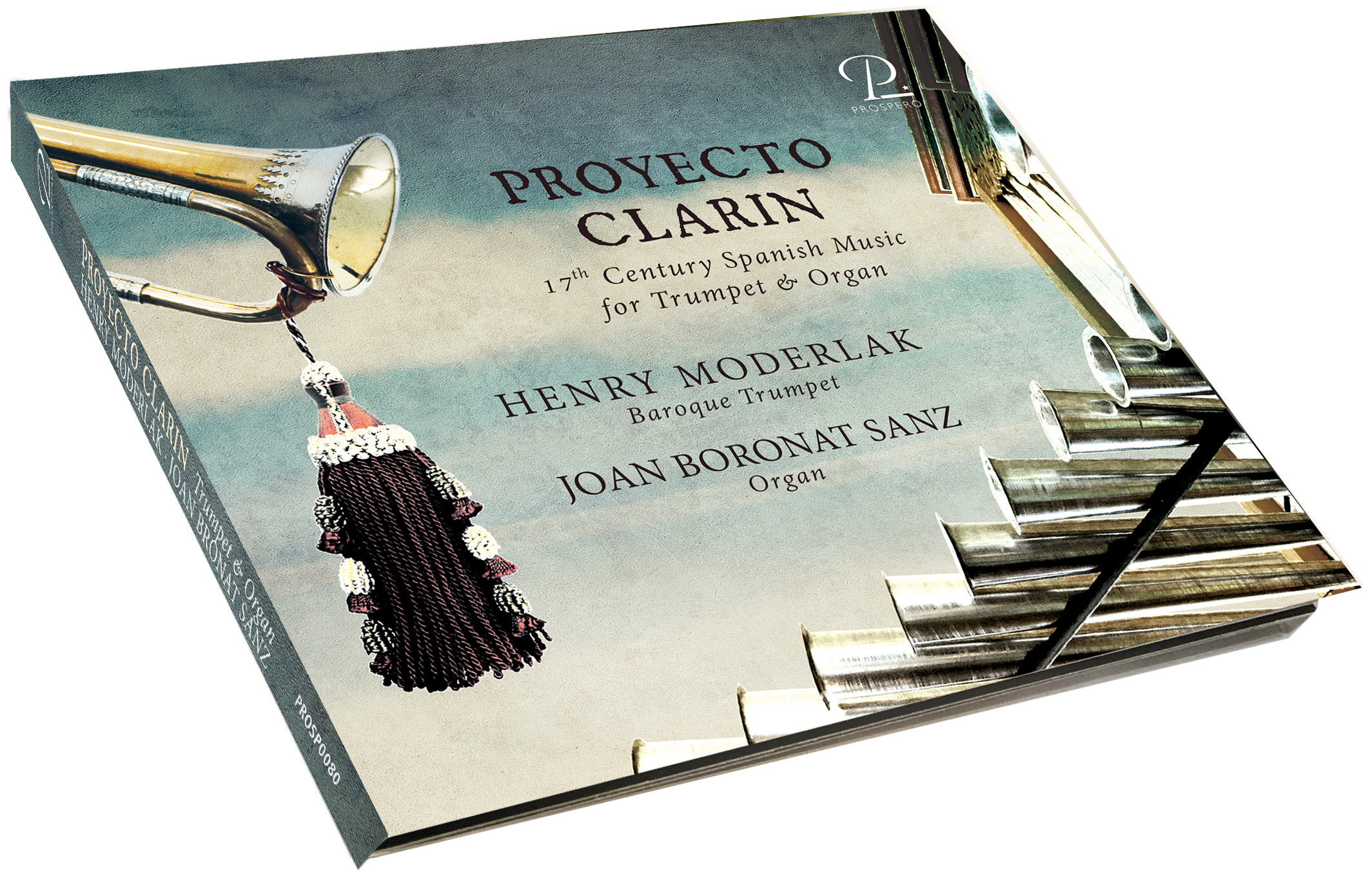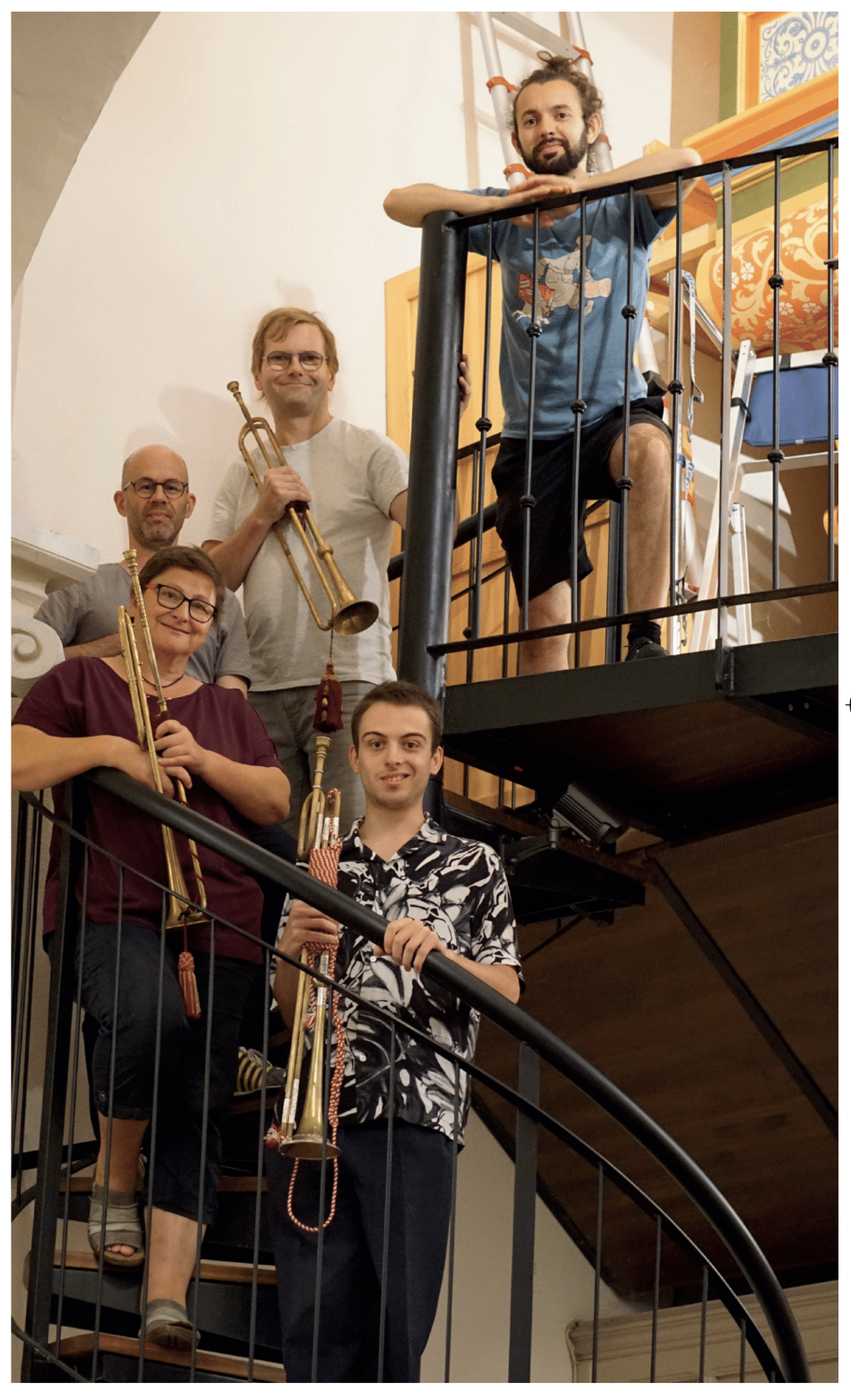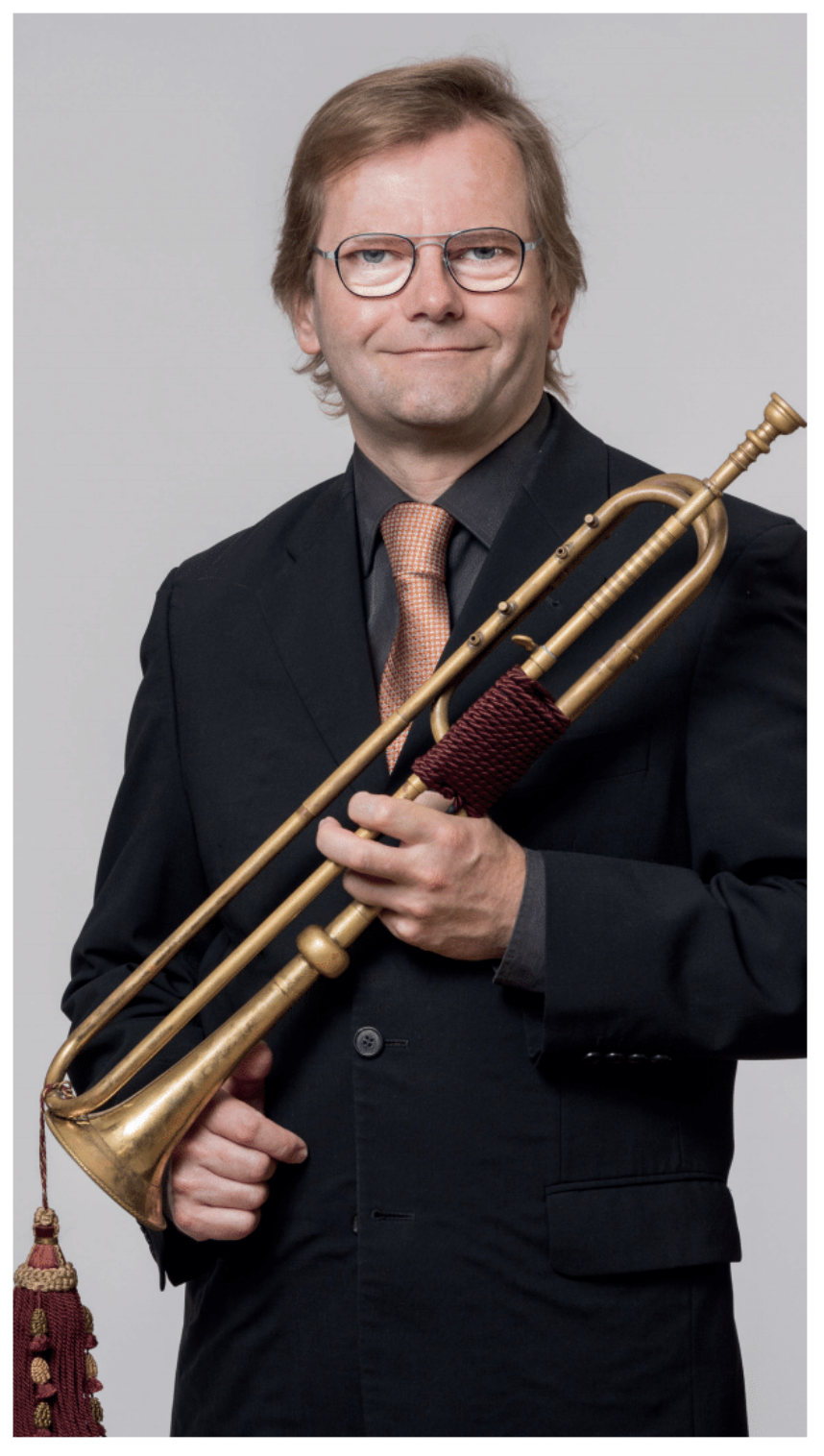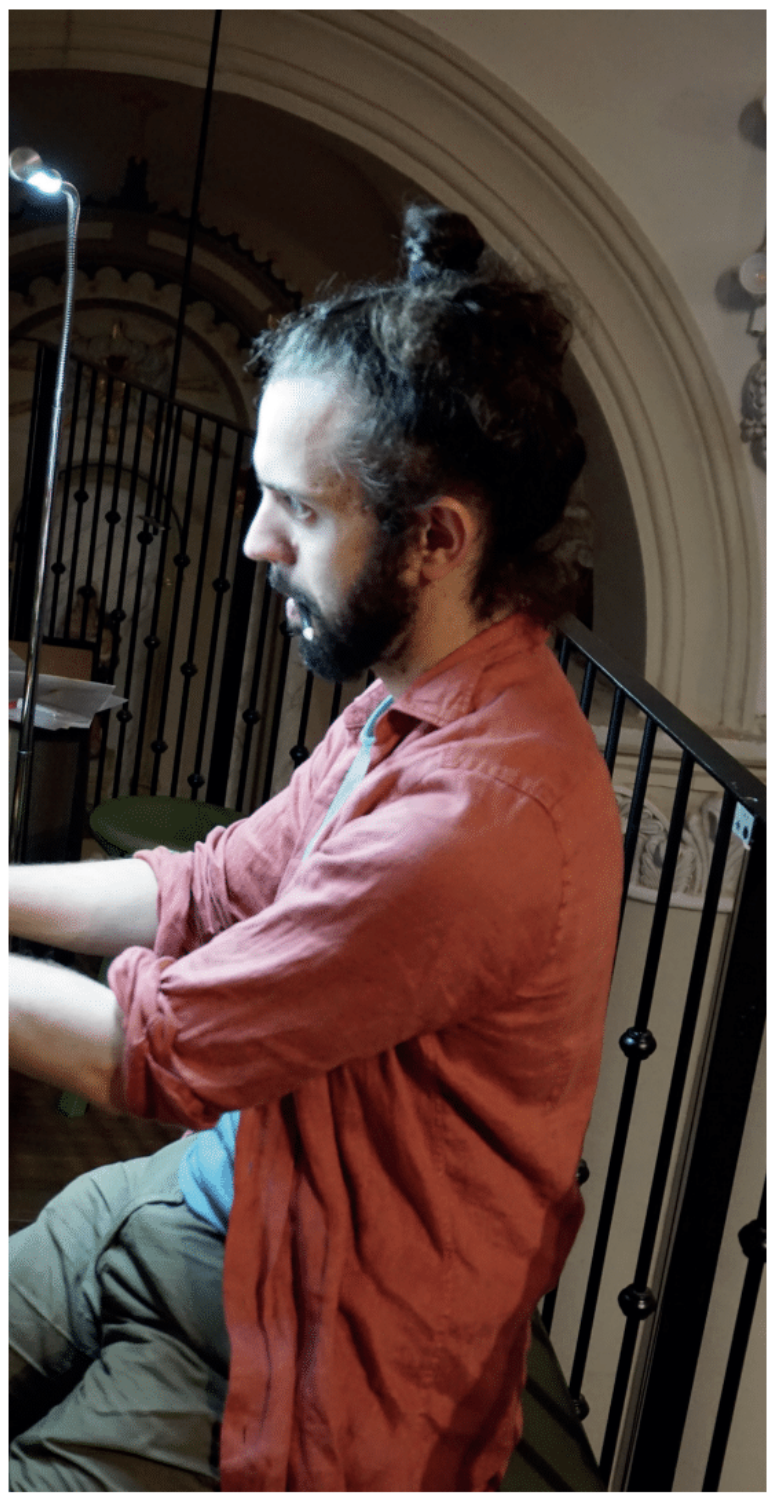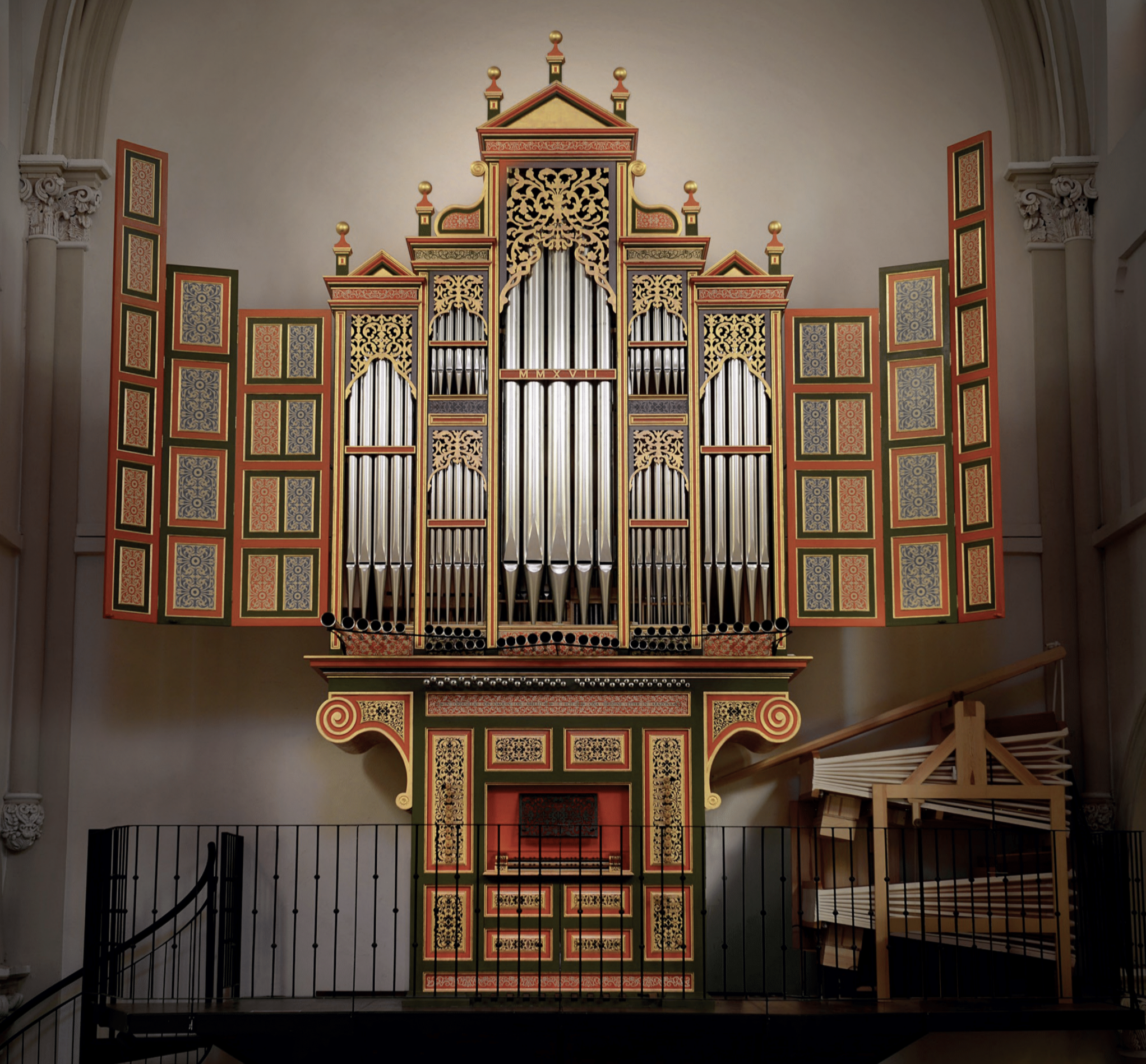Als dem Trompeter Henry Moderlak vor einigen Jahren ein prachtvoller Notenband mit dem Titel L’orgue baroque espagnol, der spanische Orgelwerke des 17. Jahrhunderts enthielt, in die Hände fiel, machte er eine interessante Entdeckung: Viele Motive im Notentext erinnerten ihn an die Trompetenliteratur dieser Zeit. Titel wie Piezas de Clarines verwiesen auf das spezielle Clarinregister spanischer Orgeln, das im 17. Jahrhundert in den Instrumenten auf der iberischen Halbinsel verbaut wurde: Mit horizontal angeordneten Pfeifen ragten die sogenannten spanischen Trompeten aus dem Orgelprospekt in den Raum hinein und imitierten die Naturtrompete in Form und Klang imitiert. Auffallend war jedoch, dass die betreffenden Passagen den Ambitus und den Tonvorrat von echten Naturtrompete verwandten – und sich daher tatsächlich auf die Trompete übertragen ließen: Die Idee zum „Proyecto Clarin» war geboren.
When trumpeter Henry Moderlak came across a magnificent volume of sheet music entitled L’orgue baroque espagnol, which contained Spanish organ works from the 17th century, he made an interesting discovery: many of the motifs in the musical text reminded him of the trumpet literature of the time. Titles such as Piezas de Clarines referred to the special clarino stop of Spanish organs, which was used in instruments on the Iberian Peninsula in the 17th century: With horizontally arranged pipes, the so-called Spanish trumpets protruded from the organ case into the room and imitated the natural trumpet in shape and sound. What was striking, however, was that the passages in question used the ambitus and range of real natural trumpets – and could therefore actually be transferred to the trumpet: The idea for the «Proyecto Clarin» was born.




